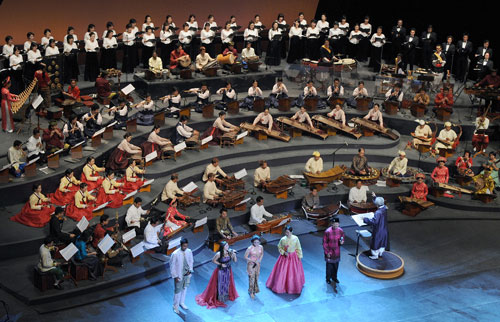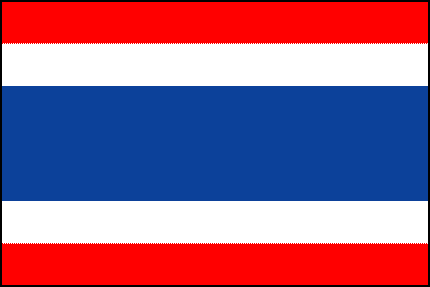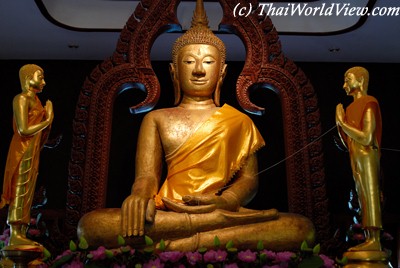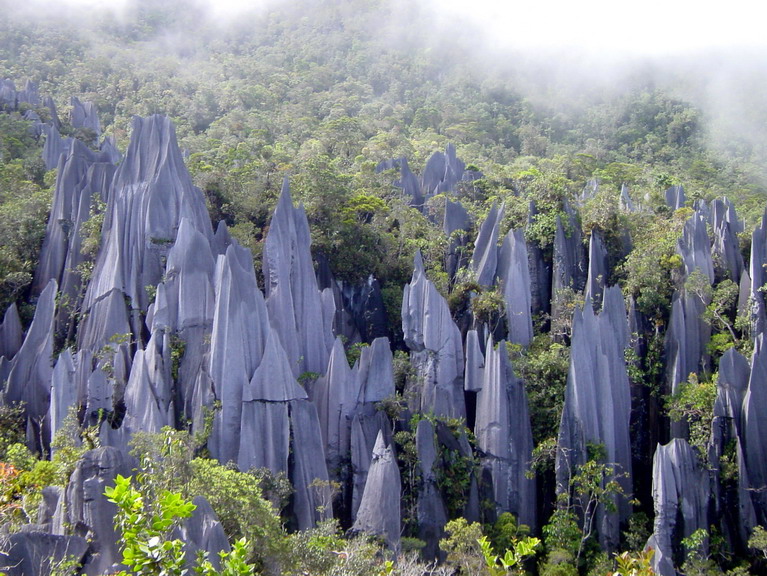Hello all! We are coming to an end for this theme. But before that happens, let us first look at Arts, Culture and Heritage in South East Asia!

Most countries in South East Asia except Thailand were once colonial countries, colonized by the Europeans.
South East Asia consist of these countries namely: Brunei, Cambodia, Indonesia, Laos, Malaysia, Myanmar, Papua New Guinea, Philippines, Singapore, Thailand, Timor- Leste and Vietnam. Each different country has its own unique Arts, Culture and Heritage.
Lets us head over to Malaysia for a head start!
Arts: A traditional form of Malay dance is Mak Yong, in which the
The gamelan is an orchestral that accompanies most performances which consists mostly of metal percussion instruments, including gongs, xylophones, and drums.

Other artistic forms include ayang kulit (shadow-puppets), silat (a stylised martial art) and crafts such as batik, weaving and silver and brass work.
 Culture: The traditional Malay wedding ceremony, which incorporates some elements of the Hindu traditions of southern India; the bride and groom dress in gorgeous brocades, sit in state, and feed each other yellow rice with hands painted with henna. Green packets are adapted from the chinese red packets, they have Arab writing on them.
Culture: The traditional Malay wedding ceremony, which incorporates some elements of the Hindu traditions of southern India; the bride and groom dress in gorgeous brocades, sit in state, and feed each other yellow rice with hands painted with henna. Green packets are adapted from the chinese red packets, they have Arab writing on them.
Heritage: The best place to get to know more about Malaysia's heritage would be to visit Malacca. Some of these places can be found there such as:
 The 'Straits Chinese', are also known as the Baba and Nyonya. They are Chinese of noble descent who adopted much of the Malay culture into theirs. Over the centuries, the Baba Nyonya have developed a distinct and highly interesting culture that is unique to Malaysia's west coast, particularly Melaka. Historical artefacts unique to this heritage can be viewed by the public which is run by the Babas and Nyonyas of Melaka as a private museum. The Heritage Museum offers guided tours (by appointment), research facilities and audio visuals.
The 'Straits Chinese', are also known as the Baba and Nyonya. They are Chinese of noble descent who adopted much of the Malay culture into theirs. Over the centuries, the Baba Nyonya have developed a distinct and highly interesting culture that is unique to Malaysia's west coast, particularly Melaka. Historical artefacts unique to this heritage can be viewed by the public which is run by the Babas and Nyonyas of Melaka as a private museum. The Heritage Museum offers guided tours (by appointment), research facilities and audio visuals.
The Portuguese colonised Melaka from 1511 to 1641. The first thing they did was build a fort overlooking the river, calling it A'Famosa. As Melaka was the centre of struggles between super powers of the time, and suffered the constant threat of attack, the A'Famosa fort was critical in Portugal maintaining its colonial foothold in the Far East.
Within the fort walls were housing and food stores, a castle, a meeting room for the Portuguese Council and five churches. A seven-month attack by the Dutch just about destroyed the entire fortress, leaving only the entrance façade and the structure of a church at the top of the hill.
ARTS
Thai dance
 To witness the traditional Thai dance, the popular Khantoke evenings would be the best places to visit. A display
To witness the traditional Thai dance, the popular Khantoke evenings would be the best places to visit. A displayof Northern culture, including dance, music, and food. It all takes place in a magnificent teak pavillion with everyone seat the traditonal way - on the floor.

Thai traditional dance is once of the most graceful aspects of Thailand and it is also quite symbolic of the Thai character itself. Ladies are dressed in beautiful costumes and the men paitiently miming the acient stories. These stories were originally developed and performed as entertainment for the royal court. Complex and beautifully executed finger and hand movements is of great importance.The Six inch, specially designed,fingernails are added to complement the ornate costumes.
 al orchestra consist of unique instruments such as the ranad (a wooden, floor level xylophone), sa-law (a bow-shaped instrument played with a violin-like bow), and two bamboo flutes, the phin pia and the khlui. The "pii-phaat" ensemble consists of between five and seven instruments and produces a pleasant mid-tempo melody to a steady metronomic rhythm. It features a slightly aggressive "nasal sounding" flute, rather like an Indian snake charmer.
al orchestra consist of unique instruments such as the ranad (a wooden, floor level xylophone), sa-law (a bow-shaped instrument played with a violin-like bow), and two bamboo flutes, the phin pia and the khlui. The "pii-phaat" ensemble consists of between five and seven instruments and produces a pleasant mid-tempo melody to a steady metronomic rhythm. It features a slightly aggressive "nasal sounding" flute, rather like an Indian snake charmer. The Thai are gifted singers and modern Thailand boasts a very active music industry which has produced many pop stars over the years.

Also know as Muay Thai, a hard martial art which is similar to other Indochinese styles of kickboxing.
Muay Thai is referred to as the "Art of Eight Limbs" because it makes use of punches, kicks, elbows and knee strikes, thus using eight "points of contact", as opposed to "two points" (fists) in Western boxing and "four points" (hands and feet) used in sport-oriented martial arts. A practitioner of Muay Thai is known as a nak muay.

Traditional Thai houses located at Chiang Mai are constructed of wood and are on stilts. There is less emphasis on beating the heat, due to the milder climate. It's design is simple but has effective design and exquisitefinish. Many have been turned into guesthouses complete with traditional wooden and rattan furniture. All can be distinguished by the decorative 'galares' (cross-sword displays) that sits on the apex of the roof - forming an archetypical Northern Thai symbol.
Heritage
Did you know that both countries have been selected as one of the world's heritage sites?
 Malaysia is represented on the World Heritage List by two natural sites namelyare the Guning Mulu Nation Park and the Kinabalu Park that is Supported by UNESCO to preserve its biodiversity through the Forest Programme. Also, Malaysia and UNESCO are working together for the development of handicrafts through the Seal of Excellence Programme. Melaka and George Town, Historic cities of the Straits of Malacca are the Culture sites listed by the UNESCO too.
Malaysia is represented on the World Heritage List by two natural sites namelyare the Guning Mulu Nation Park and the Kinabalu Park that is Supported by UNESCO to preserve its biodiversity through the Forest Programme. Also, Malaysia and UNESCO are working together for the development of handicrafts through the Seal of Excellence Programme. Melaka and George Town, Historic cities of the Straits of Malacca are the Culture sites listed by the UNESCO too. Cultural World heritage Sites
Cultural World heritage Sites- Melaka and George Town, Historic cities of the Straits of Malacca
Natural World heritage Sites
- Guning Mulu Nation Park
- Kinabalu Park
Thailand ha
 s receive the careful attention of Thailand's Fine Arts Department in such all historical sites in Thailand have become World Heritage Sites under the administrative protection of UNESCO. Thailand’s more important sites include Sukhothai and Ayutthaya Historical Parks. Visitors here can experience the legacy of the Sukhothai and Ayutthaya kingdoms, while the influence of the Khmer era on Thailand can be experienced at a number of sites around the country, with key sites in Nakhon Ratchasima, Buriram and Sisaket.
s receive the careful attention of Thailand's Fine Arts Department in such all historical sites in Thailand have become World Heritage Sites under the administrative protection of UNESCO. Thailand’s more important sites include Sukhothai and Ayutthaya Historical Parks. Visitors here can experience the legacy of the Sukhothai and Ayutthaya kingdoms, while the influence of the Khmer era on Thailand can be experienced at a number of sites around the country, with key sites in Nakhon Ratchasima, Buriram and Sisaket.
Cultural World heritage Sites
- Ban Chiang Archaeological Site
- Historic City of Ayutthaya
- Historic Town of Sukhothai and Associated Historic Towns
Natural World heritage Sites
- Dong Phayayen- Khao Yai Forest Complex

- Thungyai- Huai Kha Khaeng Wildlife Sanctuaries

Singapore being a vibrant and ever progressing country, it is pretty hard to acheive World Heritage Site due to the limited land we have. Singapore, however, has made many smaller acheivements such as producing our very own musical play " the Dim Sum dollies" or even "Sing Dollar" to show Singaporeans and tourists what our culture is like. Advertisiments on Singapore's Art, Culture and Heritage made by the Singapore Tourism Board such the video below:
Not only that! Singapore has managed to live harmoniously in the past few years with out racial riots happening in the country.
Despite the good points, Singapore can continue to improve and learn from these countries such as having to preserve the traditional culture that can be found. Some culture we have here are the Peranakans, Malay, Indians and Chinese. If one would have noticed, cultural traditions of the Chinese have already started to die. Especially the Chinese tradition where the Chong Sams would be worn during Chinese New Year. Today, you would hardly see that in Singapore among the Chinese. Another aspect that Singapore can follow and learn from is buidling a specific area just mainly the theme itself. Such as putting all the cultural heritage sites in the same place, also the heritage buildings, making the area rich with alot of history etc. This might even help us get on to the list of World Heritage Sites in the UNESCO!
With this, we shall officially close the chapter on the Arts, Culture and heritage of Singapore. We hope that from this blog, you mange to learn something about Singapore and also what culture actually is. Thank you for viewing our blog :D
~THE END~






